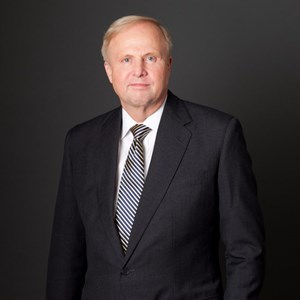BP surges as profit exceed expectations, returns get a boost
LONDON (Bloomberg) -- BP Plc joined its Big Oil peers by giving investors a positive surprise, exceeding profit estimates and earning better returns than its closest European rival. Shares surged by the most in almost three years.
New projects delivered an increase in oil and gas output, while the company also worked its existing fields and refineries more efficiently than ever. That helped offset the impact of a slump in crude prices in the fourth quarter.
The better-than-expected earnings should give shareholders some comfort after BP took on more debt to pay for a swath of U.S. shale assets, its biggest deal in 20 years. The company’s facilities were still able to churn out cash even as the oil market turned south late last year.
While higher leverage gives BP less flexibility than its peers should the commodities cycle worsen again, so far prices have rebounded swiftly this year. Its willingness to spend money delivered six major new projects in 2018, increasing oil and gas output 2.4% percent to 3.683 MMboed, the first of several years of forecast growth.
“It’s been a good quarter, it’s been a good year,” CEO Bob Dudley said in a Bloomberg television interview on Tuesday. “The best year on safety, which means reliable operations, which leads to good financial results.”
Investors seemed to agree, sending BP shares as much as 5.5% higher, the biggest intraday jump since February 2016. The stock traded up 5.1% at 546.80 pence as of 12:05 p.m. in London.
The U.K. oil major said adjusted net income was $3.48 billion in the fourth quarter, beating analyst estimates of $2.64 billion. Profit for the full year was $12.7 billion, as high as when oil was trading close to $100 a barrel.
Upstream facilities such as oil platforms ran with record reliability of 96%, the company said. Return on average capital employed was 11.2% last year, up from 5.8% in 2017. Royal Dutch Shell Plc’s comparable number was 7.6%.
Refining throughput was also the highest ever and continued to benefit from access to relatively cheap crude in North America. BP said its downstream business had a record fourth quarter, while the unit’s full-year underlying earnings before interest and tax were $7.56 billion. That beat even 2015, when a slump in crude prices delivered a stellar year for global refining and trading.
“We see this as a strong set of results,” RBC Capital Markets analyst Biraj Borkhataria said in a note. “We see the right balance of growth, longevity and defensiveness in the business.”
Oil-spill penalties
BP faces a trickier task balancing output growth with financial discipline than some of its peers. It’s still recovering from the 2010 Deepwater Horizon catastrophe, which killed 11 people and cost it more than $60 billion in penalties and compensation. Payments for the disaster are ongoing, but winding down. They reached $3.2 billion in 2018 and are likely to fall to $2 billion this year, the company said.
Cash outflows to pay for Deepwater Horizon have been the main reason why debt has reached its highest level in at least a decade, CFO Brian Gilvary said in a phone interview. Gearing, or the ratio of net debt to total equity, rose to 30.3% last quarter.
BP has said indebtedness will fall as new projects come online and cash flow rises, although that will now happen more slowly than previously anticipated. In the first half of this year, much of the company’s cash will be dedicated to completing its $10.5 billion purchase of shale assets from BHP Billiton Ltd.
In the second half, those payments should slow, while divestment proceeds will roll in. BP plans to sell as much as $6 billion of older U.S. onshore fields to reduce debt accrued in the purchase. It will also dispose of about $2 billion of assets in other areas both this year and next. The company exceeded its $3 billion divestment target for 2018.
Tighter market
Gilvary said BP is able to cut debt, repurchase shares and fund capital expenditure with oil at $50/bbl. He sees crude remaining around $60 to $65 a barrel over the next year amid tightening supply, citing output difficulties in Venezuela and Libya.
“Because our balance is at $50, we’re in pretty good shape,” Gilvary said. “The price looks pretty constructive around $60, $65.”
The company is still focused on spending discipline and will keep its organic capital-expenditure budget within $15 billion to $17 billion this year, helping gearing to fall back below 30%. Three months ago, BP told investors to expect gearing to return to the middle of its 20% to 30% target range by the end of 2019. On Tuesday, it said that will now happen in 2020.
"We’ll bring the gearing back down,” Dudley said. “I’m not concerned about ticking outside the range a little bit.”



